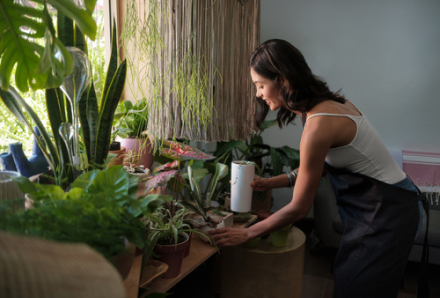You probably do your best to make sure your home is your sanctuary, keeping you safe from the outside world. You lock your doors, don’t leave the iron plugged in, and regularly clean your home to make sure you keep the germs out.
What you may not know is that the very things you use to keep your home spotless may be exposing you to other dangers. That all-purpose cleaner may wipe away spills and stains but it might be affecting you in ways you didn’t even think of.
So, how do you keep your home clean while also keeping the ones who live in it safe? You can make use of natural cleaning products, for a start. The following are the steps you can take to help ensure that your home stays clean and safe:
1. Avoid harmful chemicals. The things that are tough on grime can also be tough on your health. While the U.S. Environmental Working Group (EWG) has a list of cleaners that have toxic chemicals, this by no means exempts the products that you may be using; keep in mind that many products outside the U.S. may be unregulated.
Take a look at the ingredients list of your cleaning products and watch out for:
- • Methoxydiglycol (DEGME). According to the United Nations Economic Commission for Europe, this chemical is “suspected of damaging the unborn child.” While there are allowable levels of DEGME in cleaning products, there may be untested brands out there that have an alarming amount (one multi-surface cleaner was found to contain 15 times the allowed amount). The EWG found this carcinogen in one tarnish remover.
- • 2-butoxyethanol. A possible ingredient in all-purpose cleaner, 2-butoxyethanol can irritate eyes and damage red blood cells.
- • Sodium or potassium hydroxide. Often found in conventional oven cleaners, this ingredient can burn skin, lungs, and eyes.
- • Quaternary ammonium compounds or ethanolamine. Can bring on asthma attacks, both for those who already have it and those who weren’t previously diagnosed. Found in air fresheners, this is a potential hormone disruptor.
- • Volatile organic compounds (VOCs). Also found in air fresheners, these may be carcinogenic. While there is no conclusive evidence that phthalates and VOCs have dire health effects, minimal exposure is recommended by experts.
Thinking of switching to other brands? The U.S. Environmental Protection Agency recommends considering a product’s biodegradability, low toxicity, low VOC content, reduced packaging, and low life cycle energy use, adding, “When purchasing cleaning products, the overall best value takes into account performance, price, availability, regulatory requirements, and environmental impact. Purchasers should examine as many relevant product attributes as possible, recognizing that tradeoffs are inevitable. For example, one product may be made with renewable resources (a desirable characteristic), while another product has a lower VOC content (also a desirable characteristic).”
2. Use natural cleaners that work. You can substitute some of your conventional store-bought cleaners with homemade cleaning products with essential oils. You can use essential oils as furniture oils, for example—just make sure you test it on a hidden spot first before using. You can also use pantry staples like baking soda, vinegar, and lemons for your cleaning needs.
3. Keep outside germs from coming into your house. Make sure you wash your hands thoroughly, especially when you’re sick or someone at home is sick. Also get rid of any stagnant water (in vases; stored water should remain covered) that may be breeding grounds for mosquitoes and, thus, disease.
4. Be mindful of the environment. Caring for the earth begins at home, so a healthier home means one that is as eco-friendly as possible. Avoid products that have ingredients that are hazardous to the environment. Chemicals in detergents, for example, can pollute open waters and contaminate ground water. (Powders tend to contain more chemicals than liquids.) Their packaging can also contribute to landfill waste. Another contributor to nonbiodegradable trash? Those synthetic sponges that you throw out every couple of weeks.
Whenever you can, go for eco-friendly options. Look for detergents with biodegradable ingredients that aren’t harmful to marine life. Go to a household product refilling station if there’s one in your neighborhood to minimize on packaging waste. Substitute disposable items with reusable ones, like kitchen towels instead of paper towels. You can also substitute synthetic sponges with biodegradable cellulose sponges. Made of plant material, hemp fibers, and sulphate crystals, cellulose sponges are much kinder to the environment. (Just make sure to clean them thoroughly as food particles may get trapped in the fibers—you can even use natural cleaning products like vinegar to refresh your sponge or soak it in non-chlorine bleach to disinfect it.)
5. Bring in some greenery. Having house plants can do wonders for your home environment. Not only do they liven up a space and make it feel more welcoming, but studies have shown that they can remove up to 87% of air toxins in a day! Some of the best house plants are aloe vera, snake plants, and pothos.
sources:
health.belgium.be
epa.gov
ewg.org
epa.gov
nbcnews.com
smartparenting.com.ph





